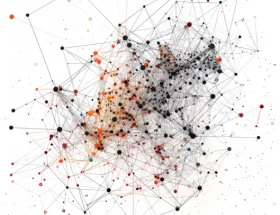Understanding differential item functioning (DIF) is critical for ensuring fairness in assessments across diverse groups. A recent study by Li et al. introduces a method to enhance the interpretability of DIF items by incorporating response process data. This approach aims to improve equity in measurement by examining how participants engage with test items, providing deeper insights into the factors influencing DIF outcomes.
Background
DIF occurs when items in a test perform differently for subgroups, even when examinees possess similar ability levels. Traditionally, DIF has been evaluated using item response scores alone, but this can limit the ability to interpret why certain items function differently. Recent advancements in data collection methods, such as tracking response behaviors, have opened new opportunities to better understand these differences. The study by Li et al. applies response process data to identify patterns in how individuals from different groups interact with test items, offering a fresh perspective on assessing DIF.
Key Insights
- Incorporating Response Process Data: The study highlights how features like timing and action sequences provide valuable information about the ways individuals engage with test items, making it possible to uncover patterns that traditional DIF analysis might miss.
- Use of Advanced Techniques: Methods such as random forest models and logistic regression with ridge regularization were used to analyze the connection between response process data and DIF items. These techniques allowed the authors to evaluate which features were most informative for interpreting DIF.
- Improved Measurement Equity: By leveraging response process data, the study offers insights into potential sources of DIF, including irrelevant factors that may unfairly influence item performance. This approach contributes to creating more equitable assessments.
Significance
This research provides an innovative framework for addressing long-standing challenges in DIF analysis. The integration of response process data enhances the ability to identify and interpret item-level biases, particularly in contexts like the Programme for International Assessment of Adult Competencies (PIAAC). These findings have implications for the design of fairer assessments that reflect diverse cognitive and behavioral patterns across subgroups.
Future Directions
Future research could explore additional response process features and their applications in other testing scenarios. Expanding the methodology to broader populations and assessment types may provide further insights into how response behaviors influence item performance. Additionally, refining predictive models could enhance the practical application of these techniques in educational and psychological measurement.
Conclusion
By combining response process data with advanced analytical methods, Li et al. contribute to a more nuanced understanding of differential item functioning. Their work underscores the importance of ongoing innovation in assessment design, ensuring fairness and equity in measuring abilities across diverse groups.
Reference
Ziying Li, Jinnie Shin, Huan Kuang, & A. Corinne Huggins-Manley. (2024). Interpreting Differential Item Functioning via Response Process Data. Educational and Psychological Measurement. https://doi.org/10.1177/00131644241298975









